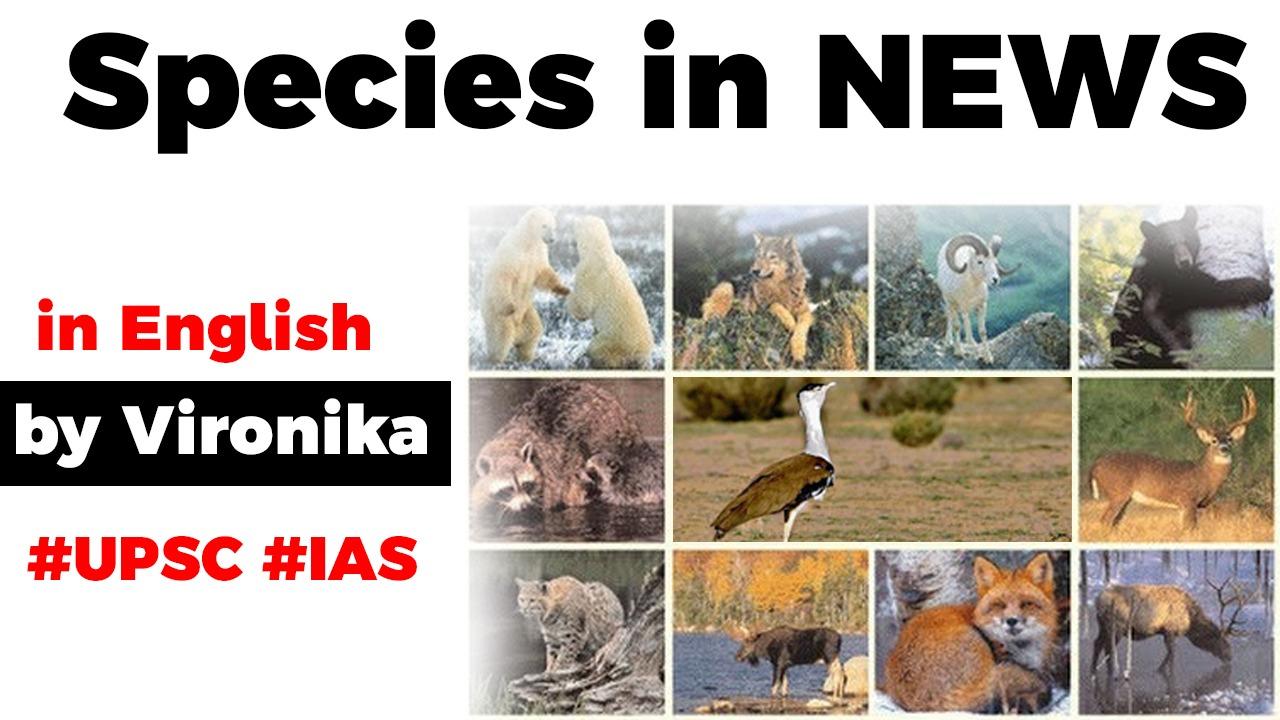Table of Contents
Thanatotheristes

- Scientists have found that a dinosaur fossil, found in Alberta in Canada in 2010, belongs to a new species of tyrannosaur. They have named it Thanatotheristes, which means “reaper of death”.
- The largest meat-eating dinosaurs
- Thanatotheristes preyed on large plant-eating dinosaurs
- Tyrannosaurs did not have one general body type
- The fossil specimen is important to understand the Late Cretaceous period
Flame-throated Bulbul

- The flame-throated bulbul, also called the Rubigula, was chosen as the mascot of the 36th National Games to be held in Goa. It is the State bird of Goa.
- IUCN status: Least Concern
Natrialba Swarupiae

- Scientists at the National Centre for Microbial Resource — National Centre for Cell Science (NCMR-NCCS) in Pune have reported a new archaeon (a kind of microorganism), which they discovered in Sambhar Salt Lake in Rajasthan.
- Archaea (singular archaeon) are a primitive group of microorganisms that thrive in extreme habitats such as hot springs, cold deserts and hypersaline lakes.
- These slow-growing organisms are also present in the human gut, and have a potential relationship with human health.
Steppe Eagle

- A lone endangered steppe eagle (Aquila nipalensis) has been sighted by a group of birdwatchers in a paddy field near Vijayawada.
- It breeds in Russia, Kazakhstan, and Mongolia during the winter season.
- Steppe eagle is the second-largest migratory eagle species to India.
Indian Pangolins

- The Madhya Pradesh forest department has radio-tagged an Indian Pangolin (Manis crassicaudata) for the first time.
- IUCN status: Endangered
- Commonly known as ‘scaly anteaters’, the toothless animals are unique, a result of millions of years of evolution
- The radio-tagging aims to know its ecology and develop an effective conservation plan for it.
- The radio-tagging is part of a joint project by the department and non-profit, the Wildlife Conservation Trust (WCT) that also involves the species’ monitoring apart from other activities.
Senna spectabilis

- The Kerala Forest Department is planning to adopt steps to arrest the rampant growth of invasive plants, especially Senna spectabilis, in the forest areas of the Nilgiri Biosphere Reserve (NBR).
- The Senna spectabilis species was planted as avenue trees in Wayanad. The vayal ecosystem (marshy land) of the forest area now has this plant in large numbers.
- The spread is posing a major threat to the forest areas of the reserve, owing to its quick growth and coppicing character.
Bar-headed goose

- Bar-headed goose, a rare goose species was sighted in the wetlands of Karingali Puncha in Kerala.
- IUCN conservation status: Least Concern.
- The Bar-headed geese (Anser Indicus) are found in central China and Mangolia and they breed there.
Caterpillar fungus

- Trade and collection of ‘Himalayan Gold’ — caterpillar fungus has become extremely popular in recent times.
- Caterpillar fungus (Ophiocordyceps Sinensis) is a fungal parasite of larvae (caterpillars) that belongs to the ghost moth.
- It is endemic to the Tibetan Plateau, including the adjoining high Himalaya (3,200-4,500 metres above sea level).
- For centuries, caterpillar fungus has seemingly been used in traditional Tibetan and Chinese medicine as a tonic, as a therapeutic medicine for lung, liver and kidney problems.
- Harvesting of caterpillar fungus starts at the beginning of May and lasts till the end of June.
- The collection period, however, depends on factors such as weather, snow cover on the pasture and elevation of collection sites.
- The villagers who harvest caterpillar fungus in the Nanda Devi Biosphere Reserve and Askot landscape belong to economically marginal communities — shepherds, porters and traders.
- The income derived through the collection and trade of this precious fungus has led to enhanced empowerment
Latest Burning Issues | Free PDF






















 WhatsApp
WhatsApp